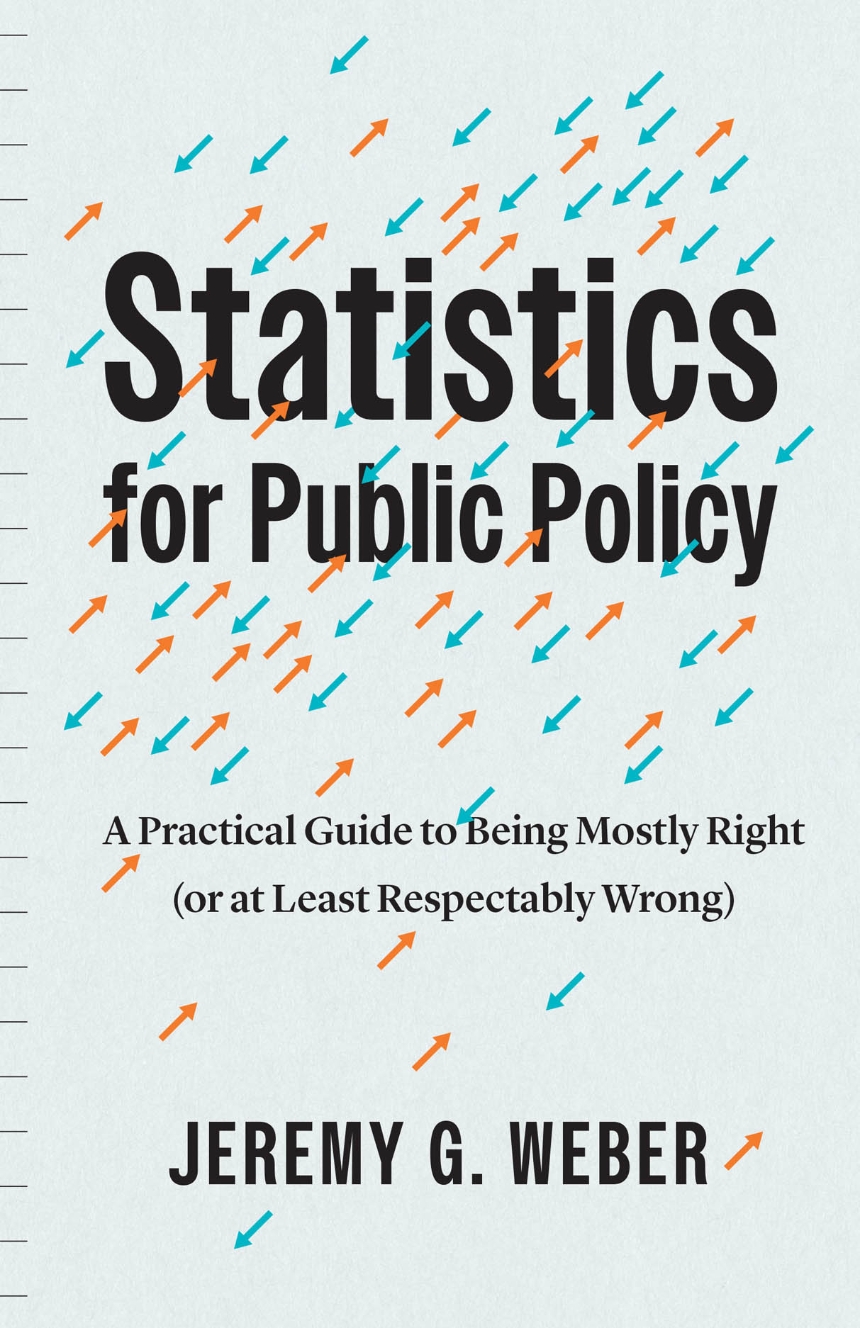Statistics for Public Policy
A Practical Guide to Being Mostly Right (or at Least Respectably Wrong)
Statistics for Public Policy
A Practical Guide to Being Mostly Right (or at Least Respectably Wrong)
A long-overdue guide on how to use statistics to bring clarity, not confusion, to policy work.
Statistics are an essential tool for making, evaluating, and improving public policy. Statistics for Public Policy is a crash course in wielding these unruly tools to bring maximum clarity to policy work. Former White House economist Jeremy G. Weber offers an accessible voice of experience for the challenges of this work, focusing on seven core practices:
- Thinking big-picture about the role of data in decisions
- Critically engaging with data by focusing on its origins, purpose, and generalizability
- Understanding the strengths and limits of the simple statistics that dominate most policy discussions
- Developing reasons for considering a number to be practically small or large
- Distinguishing correlation from causation and minor causes from major causes
- Communicating statistics so that they are seen, understood, and believed
- Maintaining credibility by being right (or at least respectably wrong) in every setting
192 pages | 17 line drawings, 2 tables | 5 1/2 x 8 1/2 | © 2024
Economics and Business: Economics--Government Finance
Political Science: Public Policy
Reviews
Table of Contents
1. The Big Picture
2. Know Your Sample and Data
3. Know Simple Statistics and Their Power
4. Know What It Means to Account for Potholes
5. Know Large from Small and Explain the Difference
6. Think Hard about Causality
7. Show That You’ve Been to Table School
8. Know How to Be Mostly Right (or at Least Respectfully Wrong)
9. Fail the Test? A Case Study in Using Statistics for Policy
Acknowledgments
Notes
Bibliography
Index
